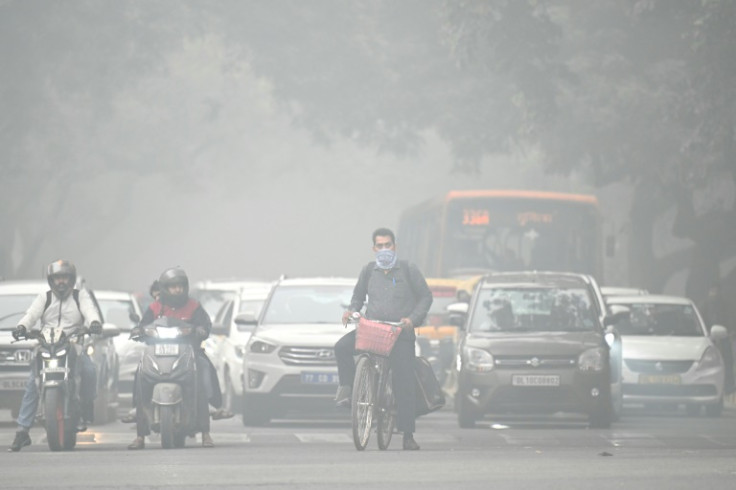India’s capital New Delhi switched schools to online classes Monday until further notice as worsening toxic smog surged past 60 times the World Health Organization’s recommended daily maximum.
Various piecemeal government initiatives have failed to measurably address the problem, with the smog blamed for thousands of premature deaths each year and particularly impacting the health of children and the elderly.
Pollution extended across a swathe of northern India — with the tourists at the Taj Mahal in Agra snapping photographs of the barely visible white marble monument — and choked residents of Lahore in neighbouring Pakistan.
“My eyes have been burning for the last few days,” said rickshaw puller Subodh Kumar, 30.
“Pollution or no pollution, I have to be on the road, where else will I go?” he said, pausing from eating at a roadside stall.
“We don’t have an option to stay indoors… our livelihood, food, and life — everything is in the open.”
The city is blanketed in poisonous smog each year, primarily blamed on stubble burning by farmers in neighbouring regions to clear their fields for ploughing, as well as factories and traffic fumes.
A report by The New York Times this month, based on samples collected over five years, revealed dangerous fumes also spewing from a power plant incinerating rubbish from landfill garbage mountains.
Levels of PM2.5 pollutants — dangerous cancer-causing microparticles that enter the bloodstream through the lungs — peaked at 921 micrograms per cubic metre at midday on Monday, according to IQAir pollution monitors, with a reading above 15 in a 24-hour period considered unhealthy by the WHO.
Individual monitoring stations noted even higher levels — one government-run monitor recorded PM2.5 pollutants at 1117 micrograms, 74 times the WHO maximum.
Dense grey and acrid smog smothered New Delhi, with IQAir listing conditions as “hazardous”.
Primary schools were ordered to cease in-person classes on Thursday, with a raft of further restrictions imposed on Monday, including limiting diesel-powered trucks and construction.
Authorities hope by keeping children at home, traffic will be reduced.
The government urged children and the elderly, as well as those with lung or heart issues “to stay indoors as much as possible”.
Air filters are too expensive for many, and most do not have homes they can effectively seal from the misery of dangerous foul-smelling air.
“The rich ministers and officials can afford to stay indoors, not ordinary people like us,” said rickshaw taxi driver Rinku Kumar, 45.
“Who can even afford an air purifier when paying monthly bills is a challenge?”
India’s Supreme Court ordered the authorities to take “all possible” action.
“It is the constitutional obligation of the central government and state governments to ensure citizens live in a pollution free atmosphere,” the court said.
Long-time Delhi resident William Dalrymple said he was shocked to “find the city embalmed in an all-enveloping burial shroud of pollution”, he wrote on social media.
“I’ve never seen anything like this in 40 years of living here,” the Scottish historian wrote, saying the “most fascinating of cities” was “currently a tragic, choking death trap”.
Critics say arguments between rival politicians heading neighbouring states — as well as between central and state-level authorities — have compounded the problem.
Politicians are accused of not wanting to anger key figures in their constituencies, particularly powerful farming groups.
But Delhi Chief Minister Atishi, who uses one name, blamed surrounding states for not stopping farmers burning the stubble.
“The people of Delhi are really troubled, they can’t breathe,” she told reporters Monday.
“I kept receiving phone calls the entire night from people who had to admit their elderly parents to hospitals for breathing issues, or parents looking for steroid inhalers for their children,” she added.
“Why? Because stubble is being burnt all over the country, in every state, everywhere, and the national government isn’t doing anything. Today, the entire north of India has been pushed into a medical emergency”.
Delhi and the surrounding metropolitan area, home to more than 30 million people, consistently tops world rankings for air pollution in winter.
AFP

AFP

AFP

AFP







